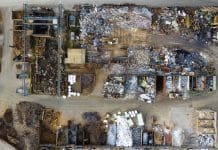How can greenhouse gas emissions from the built environment be neutralised in order to meet the UK’s net zero ambitions?
The UK was the home of the industrial revolution and, according to Michael Gove, therefore has a moral responsibility to lead on cutting emissions. In April 2019, the UK Green Building Council (UKGBC) published its first framework definition for Net Zero buildings, along with a target for achieving net zero for all new buildings by 2030 and all existing building by 2050. On 26 June 2019, the UK became the first G7 member to legislate for net zero emissions by 2050.
What is net zero?
Net zero refers to achieving a balance between the amount of greenhouse gas (GHG) emissions generated and the amount removed from the atmosphere. Carbon dioxide (CO2) is the primary greenhouse gas emitted through human activity, accounting for 81% of total UK greenhouse gas emissions in 2019.
How can net zero be achieved?
To achieve net zero, emissions produced need to be fully neutralised via natural carbon sinks, such as oceans and forests, and existing carbon capture technologies. However, climate change experts believe we cannot plant enough trees fast enough to do the job on its own.
Negative emissions technologies such as Direct Air Capture (DAC) and Bioenergy with Carbon Capture and Storage (BECCS) are also still too expensive to be used at scale. Therefore, a significant reduction in GHG emissions across all sectors of the economy is required if the UK is to meet this challenging target.
Net zero buildings
About 19% of the UK’s emissions come from heating buildings – 77% from homes and 23% from commercial and public buildings. So, it is vital to find ways of cutting emissions from heating.
Adopting renewable energy technologies and moving away from the use of fossil fuels, like natural gas, seems an obvious solution. Low carbon technologies already present on the market, such as heat networks and heat pumps, have huge potential for contributing to UK’s net zero target. These solutions, however, are often challenging to implement in older buildings with lower levels of insulation.
Therefore, retrofitting/refurbishing existing buildings to make them more energy efficient is critical. For refurbishment/retrofit projects, there is a strong argument that efforts should be first focused on improving the fabric of buildings to reduce energy demand then adding renewable generation to meet energy needs.
Net zero targets and the Soft Landings approach
It is important to set performance targets (in this case, targets related to the energy performance of the building fabric) at the beginning of a refurbishment/retrofit project. The Soft Landings approach, adopted in this early stage of the planning, will ensure that targets set for the project at the beginning will be met at the end.
To set realistic and meaningful targets, the investigation should first take place to understand the current performance of the fabric and energy consumption of the building. Such an investigation can be done through different tests/assessments:
Thermal imaging: A thermal imaging camera can provide images of the heat patterns emitted from a building. It can be used to test the effectiveness of insulation and finding air leakage.
In-situ U-value testing: Portable U-value testing kits can be used to measure the thermal transmittance of different elements of a building (such as external walls and roofs), helping to identify potential insulation improvements.
Airtightness testing: This test is used to measure the amount of uncontrolled air leakage through gaps and cracks in the fabric of the building envelope.
Energy assessment: Energy data is collected and analysed to illustrate the energy baseload, daily energy profile and peak demand.
While it is important to improve the energy performance of the fabric of existing buildings, it is also important to ensure the improvement will not cause condensation and will not affect indoor air quality. Condensation risk analysis can be done to ensure proposed solutions will not cause condensation.
To learn more about achieving net zero in the built environment, join BSRIA’s sixth annual Soft Landings Conference in June – the biggest Soft Landings event of the year. Featuring presentations and panel discussions from industry experts and specialists alike, the event promises to deliver real knowledge on this important topic. Read more here.
Michelle Agha-Hossein
Building Performance Lead
Tel: +44 (0)1344 465 600
Building Services Research and Information Association (BSRIA)
Twitter: @BSRIALtd
LinkedIn: bsria
Please note: this is a commercial profile.














